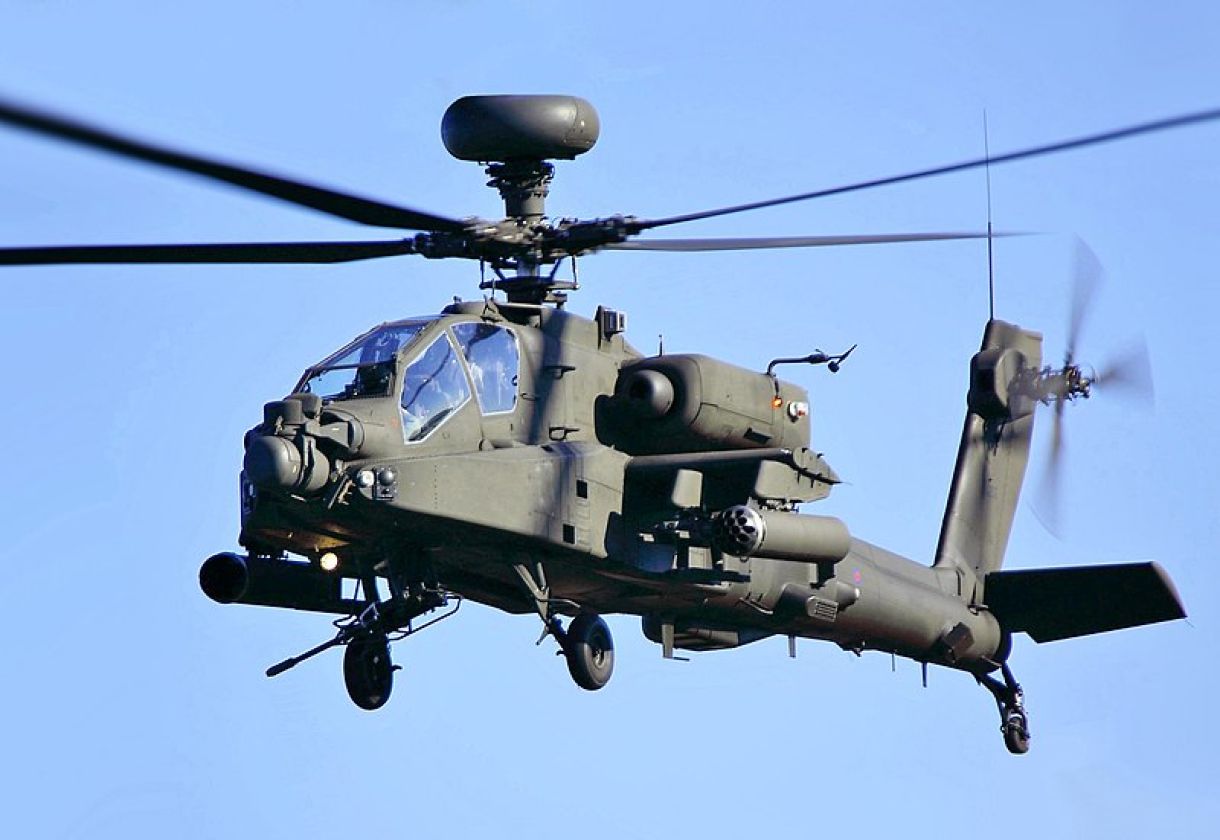As the Russian army prepares to face German and American Main Battle Tanks (MBT) in Ukraine in the next few months, it was not too long ago when Moscow’s attack helicopters exercised alongside Sweden’s Leopard tanks.
It was in 1995 when the Mi-28 chopper was participating in a Swedish procurement program to buy such helicopters, with one of the contenders being the US AH-64 Apache.
A photo has emerged on social media of a Mi-28 ‘Havoc’ flying over a Swedish Leopard-2S (Stridsvagn-121) during the performance evaluation test, possibly at Boden’s helicopter base where the Russian helicopters were being hosted.
Reports indicate that while the Swedes were impressed by both the helicopters in certain respects, they were particularly impressed by the Russian machine owing to its overall survivability, maintainability, and accuracy of its Fire Control System (FCS), guns, and missiles.
However, no helicopter was eventually purchased because it took until the second round of tests when the government also slashed the defense budget, which placed cuts on the program’s funding.
It nevertheless exposes the fluidity and impermanence of the world of politics and foreign affairs. Today, Sweden finds itself on the opposite side of the war with Russia, seeing its membership bid for the North Atlantic Treaty Organization (NATO) being held up by Turkey.
Against this backdrop, the Mi-28 and the Leopard came together, the former possibly in an overhead gunship support mission for tanks and infantry. The Stridsvagn-121 is the Swedish name for the 160 used Leopard IIs, which reached Sweden in 1994.
Mi-28 – Robust Yet Night-Blind
According to information from disparate sources on Russian Telegram groups, the evaluation helicopter (Mi-28 prototype 042) was airlifted by an II-76 to Lulea on October 7, 1995.
Using Mi-24s and Mi-28s in Moscow, the Swedes had trained one test pilot and two service pilots to fly the Mi-28. Swedish personnel ultimately flew as weapons systems operators during the evaluation and not as command pilots (the Mi-28 does not have dual controls).
The Swedes were mighty impressed with the effective and easy-to-use sighting system that could be operated even by an inexperienced crew; good ballistic and armor protection; extensive Radar Warning Receivers (RWR) and Electronic Counter Measures (ECM); and good cockpit layout and ergonomics.

The issues they faced were with the handling capability of the earlier production variants and the incompatibility of its electrical, electronic devices, and design features. This makes the introduction of new avionics, possibly Western, very difficult.
Lastly, the Mi-28s completely lacked any night-fighting capability. The Russians stood ready to offer the Mi-28N towards this end. Some unexploded rockets were also found when the Swedes pointed to possible manufacturing and product quality issues in Russia.
The official Swedish Army Aviation Centre report called the Mi-28’s weapons accuracy “good and astonishingly repeatable.” The 9M120 Ataka anti-tank guided missile (ATGM) was fired against stationary targets at a maximum range of 4680 meters. The firing occurred when the Mi-28 flew at 200 kilometers an hour, with the missile hitting within one meter (3.3 feet) of the target.
Rockets, meanwhile too, were found to be accurate up to a range of 4000 meters (13,123ft), registering 35 hits registered from 40 firings. The Mi-28 was flown for 30 hours and was airworthy on all occasions with minimal technical snags.
AH-64 Apache – Slick, Versatile Yet Delicate
The AH-64 Apache was perceived as a highly effective, maneuverable, long-range, fast, flexible, powerfully armed helicopter that was nevertheless too complex and technically tedious to operate.

The Apaches reportedly undertook a range of tactical scenarios, including operational redeployment between military districts, avoiding enemy fighter aircraft, engagement of enveloping forces, deep strike operations, operations in the Swedish archipelago, engagement of enemy air assault forces, delaying enemy mechanized forces, and supporting attacking armored forces.
The Swedes saw the Apache quickly adapting to Swedish terrain, tactics, and military posture and could fly long distances in the Swedish geography with substantial weapons payloads.
The Apaches even shockingly managed to avoid JAS-37 Viggen fighters without Electronic Warfare (EW) systems. Mostly, the Apaches thrived in night-time operations over the Arctic – a key Swedish requirement. Issues were found over the incompatibility of Swedish radios with Apache’s systems.
- The author can be reached at satamp@gmail.com
- Follow EurAsian Times on Google News




